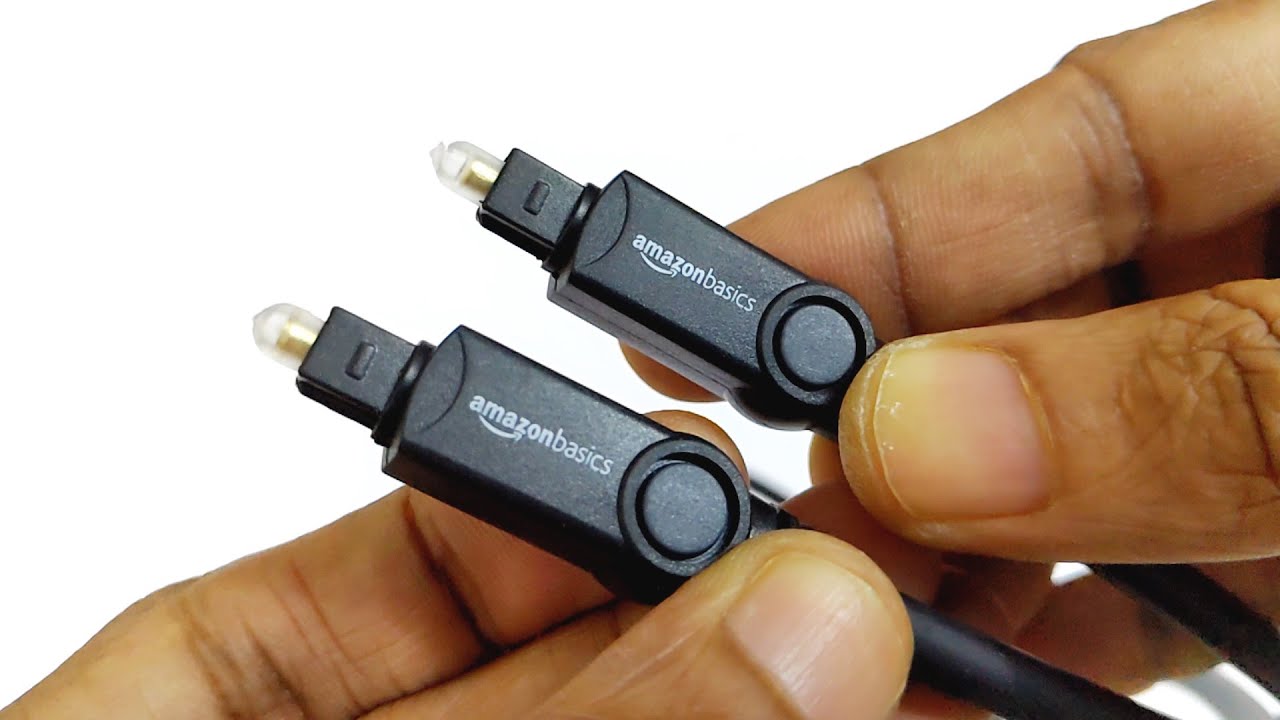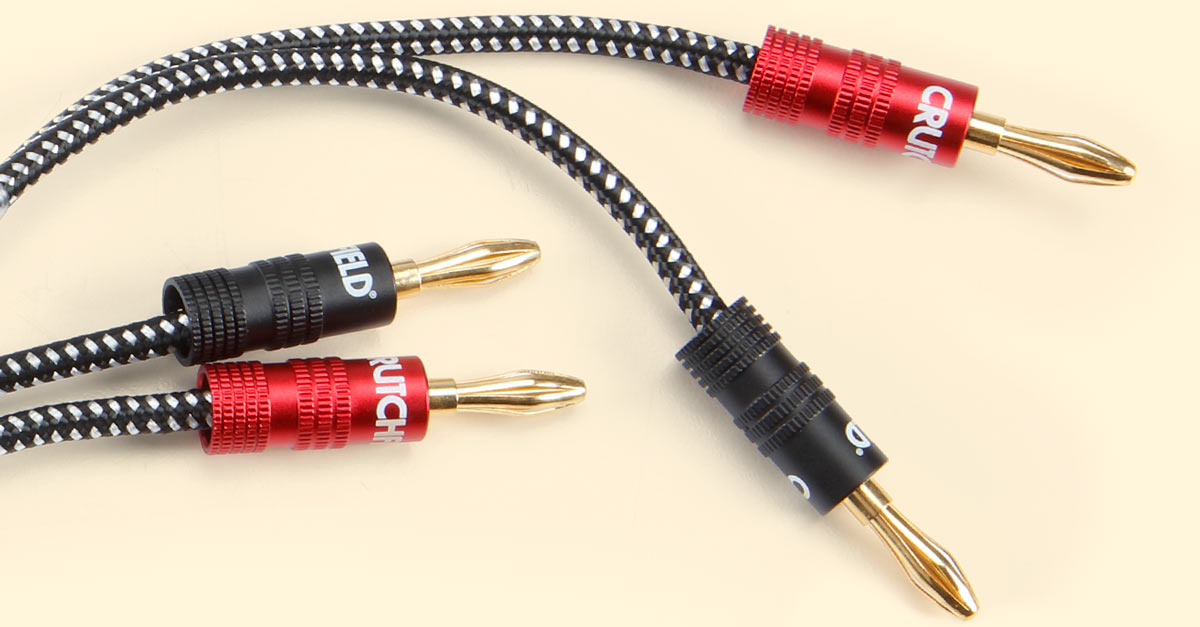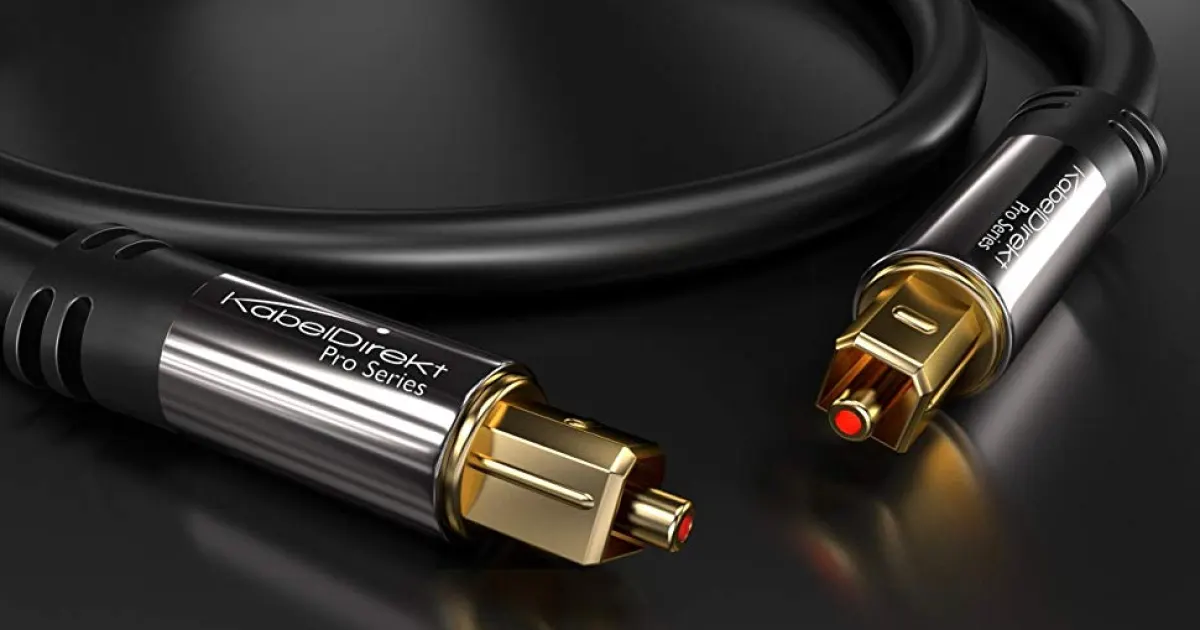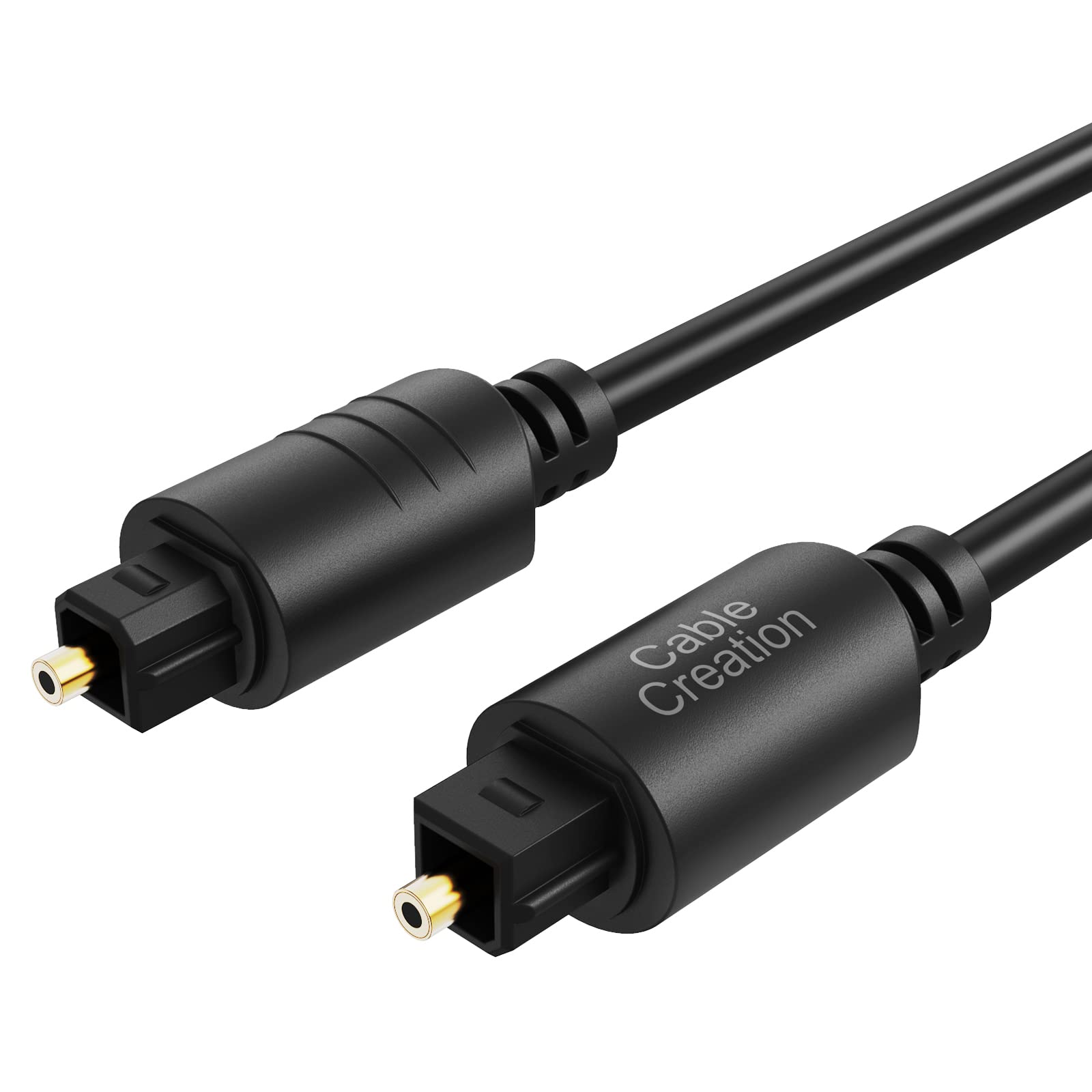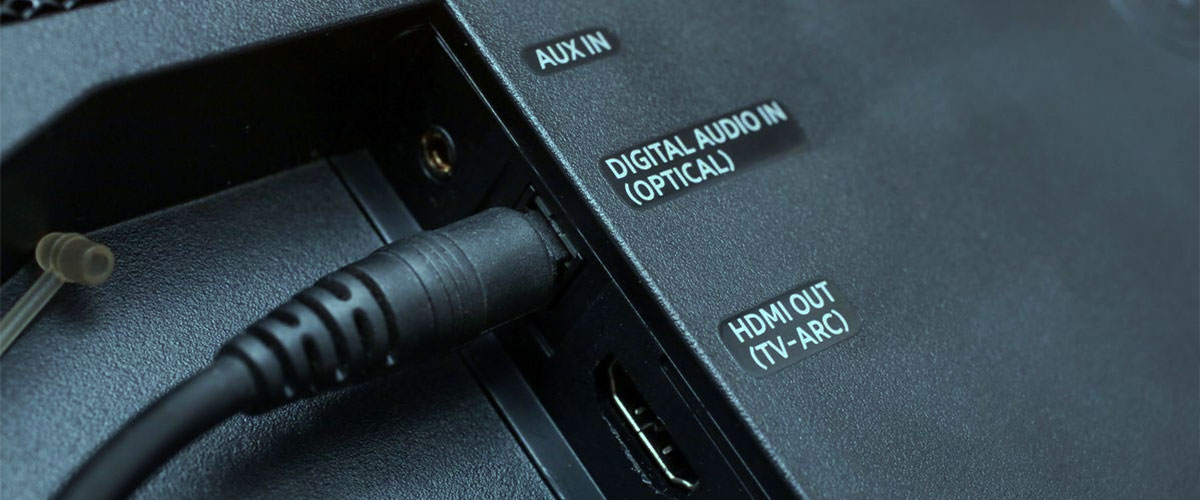Home>Production & Technology>Audio Cable>Which Cable Gives Better Sound Quality Optical Audio Cable Or HDMI?
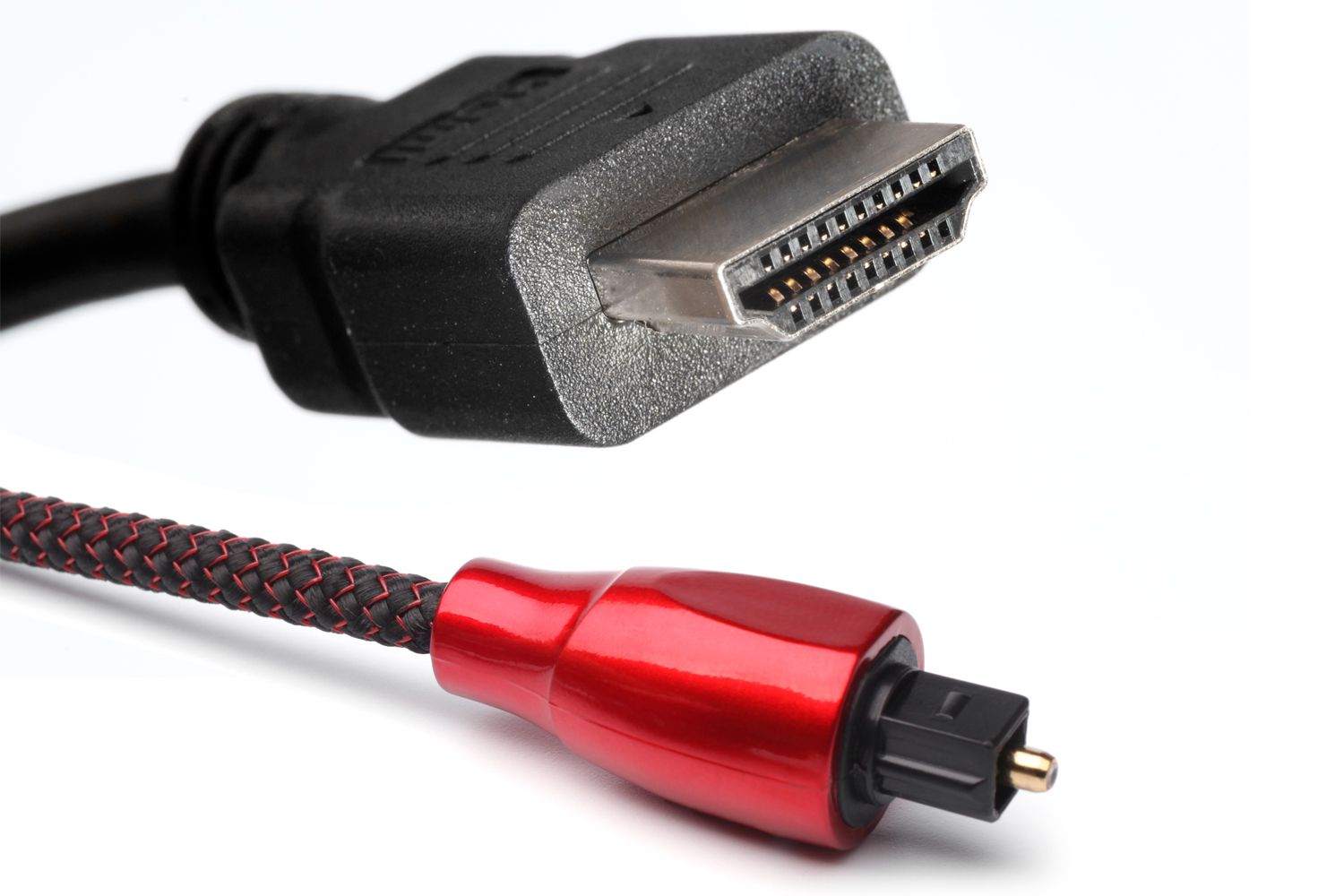

Audio Cable
Which Cable Gives Better Sound Quality Optical Audio Cable Or HDMI?
Modified: January 22, 2024
Discover which audio cable provides superior sound quality between optical audio cable and HDMI. Explore the advantages and differences to make an informed decision for your audio setup.
(Many of the links in this article redirect to a specific reviewed product. Your purchase of these products through affiliate links helps to generate commission for AudioLover.com, at no extra cost. Learn more)
Table of Contents
Introduction
When it comes to audio cables, there are several options to choose from. Two popular choices are the optical audio cable and HDMI cable. Both cables are commonly used for connecting audio devices to TVs, sound systems, and other audio equipment. But which cable offers better sound quality?
In this article, we will explore the differences and similarities between optical audio cables and HDMI cables, and discuss their advantages and limitations. We will also delve into the factors that can affect sound quality in both types of cables. By the end, you’ll have a better understanding of which cable might be the best fit for your audio setup.
Before we dive into the details, it’s important to understand the basic functionality of both cables. An optical audio cable, also known as a TOSLINK cable, transmits audio signals in a digital format using optical light pulses. On the other hand, an HDMI cable, which stands for High-Definition Multimedia Interface, is capable of transmitting both audio and video signals in a digital format.
Optical audio cables have been around for many years and have proven to be reliable and durable. They are often used to connect devices such as soundbars, home theater systems, and gaming consoles. HDMI cables, on the other hand, are more versatile and commonly used for connecting various audio and video devices, including TVs, Blu-ray players, and gaming consoles.
Now, let’s take a closer look at the advantages and limitations of each cable before comparing their sound quality.
Overview of Optical Audio Cable
An optical audio cable, also known as a TOSLINK cable, is a type of digital audio cable that uses optical light pulses to transmit audio signals. It consists of a plug with a fiber optic cable that carries the audio data in the form of light waves. The cable is usually made of high-quality materials such as PVC or fiber-optic glass to ensure the optimal transmission of audio signals.
One of the key advantages of optical audio cables is their ability to transmit high-quality digital audio signals without any loss in quality. Unlike analog cables, which can suffer from interference and signal degradation, optical cables maintain the integrity of the audio data throughout the transmission process. This makes them ideal for transmitting audio signals over long distances or in environments with high levels of electromagnetic interference.
Optical audio cables are also capable of supporting various audio formats, including standard stereo and multi-channel surround sound formats like Dolby Digital and DTS. This versatility makes them suitable for connecting devices such as soundbars, home theater systems, and gaming consoles that require high-quality audio output.
In terms of connectivity options, optical audio cables are compatible with devices that feature a TOSLINK optical audio port. This port is commonly found on audio equipment, TVs, and gaming consoles. However, it’s important to note that some newer devices, such as smartphones and tablets, may not have a built-in optical audio port. In such cases, you may need to use an adapter or converter to connect the optical audio cable to the device.
When it comes to installation and setup, optical audio cables are relatively easy to use. Simply plug one end of the cable into the optical audio output port of your audio source and the other end into the optical audio input port of your audio receiver or device. Once connected, you may need to adjust the audio settings on your device to ensure the audio output is directed through the optical connection.
Overall, optical audio cables offer a reliable and efficient way to transmit high-quality digital audio signals. Their ability to maintain signal integrity and support various audio formats makes them a popular choice for audio enthusiasts and professionals alike.
Advantages of Optical Audio Cable
Optical audio cables offer several advantages when it comes to transmitting audio signals. Here are some key benefits:
- High-Quality Digital Audio: One of the primary advantages of optical audio cables is their ability to transmit high-quality digital audio signals. Unlike analog cables, which can suffer from signal degradation and interference, optical cables ensure a clean and accurate transmission of audio data. This is particularly important when dealing with high-resolution audio formats and multi-channel surround sound.
- No Electromagnetic Interference: Another advantage of optical audio cables is that they are immune to electromagnetic interference (EMI). Unlike cables that use electrical signals, optical cables transmit audio using light pulses. This means that they are not affected by nearby electrical devices or electromagnetic fields, ensuring a consistent audio experience free from distortion or noise.
- Long Transmission Distance: Optical cables are capable of transmitting audio signals over long distances without any loss in quality. This makes them ideal for setups where the audio source is located far away from the audio receiver or device. Whether you have a large living room or a dedicated home theater system, optical audio cables can effectively transmit audio signals to your desired location without any signal loss.
- Support for Various Audio Formats: Optical audio cables are compatible with a wide range of audio formats, including standard stereo and popular surround sound formats such as Dolby Digital and DTS. This versatility allows you to enjoy immersive audio experiences when connected to devices such as soundbars, home theater systems, and gaming consoles.
- Durability: Optical audio cables are typically made with high-quality materials such as PVC or fiber-optic glass, making them durable and resistant to damage. They are less prone to cable fraying or wear and tear compared to other types of audio cables. Additionally, the connectors on optical cables are designed to withstand repeated plugging and unplugging without compromising signal quality.
Overall, the advantages of optical audio cables make them a popular choice for those seeking high-quality audio transmission, long-distance connectivity, and immunity to electromagnetic interference. Their compatibility with various audio formats and durability further enhance their appeal for audio enthusiasts and professionals alike.
Limitations of Optical Audio Cable
While optical audio cables offer many benefits, there are a few limitations to consider when using them for audio transmission. Here are some key limitations:
- Audio-Only Transmission: One major limitation of optical audio cables is that they can only transmit audio signals. Unlike HDMI cables, which can transmit both audio and video signals, optical cables are solely dedicated to audio transmission. This means that if you need to transmit both audio and video signals simultaneously, you will need to use additional cables or alternative connection methods.
- Bandwidth Limitations: Although optical audio cables are capable of transmitting high-quality audio, they are limited in terms of bandwidth. This can become a limitation when dealing with uncompressed high-resolution audio formats or advanced audio technologies. While most consumer applications do not encounter issues with bandwidth limitations, professionals or audiophiles may prefer alternative connection options for the highest fidelity audio.
- Limited Compatibility: Optical audio cables require devices with a TOSLINK optical audio port for connectivity. While many audio devices, soundbars, and home theater systems are equipped with this port, not all devices have it. This limitation may require the use of adapters or converters to connect optical cables to devices without a built-in optical audio port, such as smartphones or tablets.
- Fragility: Although optical audio cables are typically made with durable materials, they can be more fragile compared to other types of audio cables. The fiber-optic cable inside the outer protective layer can be susceptible to bending or breaking if mishandled. It is important to handle optical cables with care and avoid excessive bending or twisting to prevent any damage to the cable.
Overall, while optical audio cables provide reliable audio transmission and immunity to electromagnetic interference, there are limitations to consider. Due to their audio-only transmission and bandwidth limitations, they may not be suitable for situations where simultaneous audio and video transmission or the highest possible audio fidelity is required. However, for most consumer applications, optical audio cables provide a convenient and high-quality audio connection option.
Overview of HDMI Cable
HDMI (High-Definition Multimedia Interface) cables are widely used for transmitting both audio and video signals in digital format. They offer a convenient way to connect various audio and video devices, including TVs, Blu-ray players, gaming consoles, and home theater systems.
HDMI cables support high-definition audio and video formats, making them a popular choice for modern audio setups. They can deliver uncompressed digital audio, providing superior sound quality compared to analog cables. HDMI cables also support multi-channel surround sound formats like Dolby TrueHD and DTS-HD Master Audio, allowing you to enjoy immersive audio experiences in your home theater system.
In addition to high-quality audio transmission, HDMI cables can transmit high-bandwidth video signals. They support various video resolutions, including standard definition, high definition, and even 4K Ultra HD resolutions. This makes HDMI cables ideal for connecting devices with high-resolution displays, ensuring crisp and vibrant video playback.
Another advantage of HDMI cables is their ability to transmit audio and video signals simultaneously. This eliminates the need for separate cables for audio and video connections, simplifying the setup and reducing cable clutter. With HDMI cables, you can enjoy a seamless integration of audio and video, providing a unified multimedia experience.
HDMI cables also offer advanced features such as HDMI-CEC (Consumer Electronics Control). This feature allows you to control multiple HDMI-connected devices with a single remote control. For example, you can use your TV’s remote control to adjust the volume of a connected soundbar or switch between HDMI-connected devices, saving you the hassle of juggling multiple remotes.
When it comes to compatibility, HDMI cables are widely supported by most modern audio and video devices. They feature a standard HDMI connector that is compatible with HDMI ports found on TVs, Blu-ray players, gaming consoles, and other audio-visual equipment. However, it’s worth noting that different HDMI versions may offer different capabilities and features. For example, newer HDMI versions may support higher video resolutions or additional audio formats.
In terms of setup, using HDMI cables is relatively straightforward. Simply connect one end of the cable to the HDMI output port of your audio or video source and the other end to the HDMI input port of your display or audio receiver. Many devices also support audio return channel (ARC) functionality, which allows the audio signal to be sent back to the audio receiver through the HDMI cable, eliminating the need for a separate audio connection.
In summary, HDMI cables offer a convenient and versatile solution for transmitting high-quality audio and video signals. With support for various resolutions and surround sound formats, simultaneous audio and video transmission, and advanced features like HDMI-CEC, HDMI cables have become a go-to choice for connecting audio and video devices in modern home entertainment systems.
Advantages of HDMI Cable
HDMI (High-Definition Multimedia Interface) cables offer several advantages when it comes to audio and video transmission. Here are some key benefits of using HDMI cables:
- High-Quality Audio and Video: One of the primary advantages of HDMI cables is their ability to transmit high-quality audio and video signals. HDMI cables support uncompressed digital audio, delivering superior sound quality compared to analog cables. They also support various video resolutions, including HD and 4K Ultra HD, ensuring sharp and vibrant visuals.
- Simultaneous Audio and Video Transmission: Unlike other types of cables that require separate connections for audio and video, HDMI cables can transmit both signals simultaneously. This eliminates the need for extra cables and simplifies the setup process. HDMI cables offer a convenient solution for connecting devices such as gaming consoles, Blu-ray players, and home theater systems.
- Support for Surround Sound Formats: HDMI cables are capable of transmitting multi-channel surround sound formats, such as Dolby TrueHD and DTS-HD Master Audio. This allows you to experience immersive audio when connected to devices like AV receivers and soundbars. Whether you’re watching movies or playing games, HDMI cables can deliver the high-fidelity audio experience you desire.
- Bidirectional Communication: HDMI cables support bidirectional communication between devices. This means that they can transmit not only audio and video signals but also control signals. With features like HDMI-CEC (Consumer Electronics Control), you can use one remote control to manage multiple HDMI-connected devices, making it easier to navigate and control your home entertainment system.
- Compatibility: HDMI cables are widely compatible with most modern audio and video devices, including TVs, gaming consoles, Blu-ray players, and sound systems. They feature a standard HDMI connector that is easy to connect and disconnect, providing a secure and reliable connection between devices.
- Convenience and Versatility: HDMI cables offer a convenient and versatile solution for audio and video connectivity. They provide a single cable solution for transmitting both audio and video signals, reducing cable clutter and simplifying the setup process. Additionally, HDMI cables can carry data and Ethernet signals, allowing for internet connectivity and enabling features like streaming and firmware updates.
Overall, the advantages of HDMI cables make them a popular choice for connecting audio and video devices. With high-quality audio and video transmission, simultaneous audio and video support, compatibility with surround sound formats, bidirectional communication, and convenience features, HDMI cables provide a seamless and immersive multimedia experience in home entertainment systems.
Limitations of HDMI Cable
While HDMI (High-Definition Multimedia Interface) cables offer numerous advantages, there are also some limitations to consider when using them for audio and video transmission. Here are some key limitations:
- Length Limitations: HDMI cables have limitations when it comes to the length of the cable. Longer HDMI cables can experience signal loss and degradation, leading to reduced audio and video quality. For longer distances, active HDMI cables or signal boosters may be required to maintain optimal signal integrity.
- Compatibility with Older Devices: HDMI cables use a standardized connection type and protocol, which means that they may not be compatible with older devices that use different audio and video interfaces. In such cases, adapters or converters may be needed to connect HDMI cables to older devices with different connectivity options.
- Bandwidth and Version Limitations: Different HDMI versions offer different capabilities and features. Some older HDMI versions may have limitations in terms of maximum video resolution or supported audio formats. It’s important to ensure that the HDMI cable and devices you are using are compatible with the desired audio and video specifications.
- Audio Format Support: While HDMI cables support various audio formats, it’s important to note that not all devices may fully support or decode certain audio formats transmitted through the HDMI cable. In some cases, you may need to adjust the audio settings on your devices to ensure proper audio decoding and playback.
- Cost: HDMI cables can vary in price, and some high-quality cables can be more expensive compared to other types of audio and video cables. However, it’s important to note that there is no significant benefit in terms of audio and video quality with extremely expensive HDMI cables compared to more reasonably priced options.
- Single Device Connection: HDMI cables are designed for connecting one device to another. If you need to connect multiple devices to a single display or audio receiver, additional HDMI ports or an HDMI switch may be required to expand the available connections.
Despite these limitations, HDMI cables remain a popular and widely used option for audio and video connectivity. They offer convenient, high-quality transmission, support for multiple audio and video formats, and compatibility with modern devices. By understanding these limitations and considering your specific audio and video requirements, you can effectively utilize HDMI cables in your home entertainment setup.
Sound Quality Comparison: Optical Audio Cable vs HDMI
When it comes to comparing sound quality between optical audio cables and HDMI cables, it’s important to consider the technical aspects that influence audio transmission. Both cables are capable of delivering high-quality audio, but there are some differences to be aware of.
Optical audio cables transmit audio signals in a digital format using light pulses. This digital transmission ensures a clean and accurate transfer of audio data, resulting in high-fidelity sound reproduction. Optical cables are particularly well-suited for multi-channel surround sound formats, such as Dolby Digital and DTS, as they can maintain the integrity of the audio data across multiple audio channels.
HDMI cables, on the other hand, have the advantage of carrying both audio and video signals in a single cable. They support high-definition audio formats and can deliver uncompressed digital audio, resulting in exceptional sound quality. HDMI cables are capable of transmitting multi-channel surround sound formats, including the newer and more advanced audio formats like Dolby Atmos and DTS:X, which provide a more immersive and realistic audio experience.
However, it’s important to note that the sound quality can also be influenced by other factors in addition to the cables themselves. These factors include the audio source, the quality of the audio equipment (such as AV receivers or soundbars), the audio settings, and the playback system.
For most consumer applications and typical audio setups, the difference in sound quality between optical audio cables and HDMI cables may be negligible. The digital transmission of both cables ensures minimal signal loss and distortion, resulting in high-quality audio playback.
That being said, in certain cases where the highest possible audio fidelity is desired, HDMI cables may have a slight advantage. They can support advanced audio formats and higher audio bandwidths, which can potentially result in a more immersive and detailed audio experience.
Ultimately, the choice between an optical audio cable and an HDMI cable for sound quality will depend on your specific audio setup and requirements. If you primarily focus on audio transmission and have a system that supports advanced audio formats, HDMI cables might be the preferred choice. However, if you’re looking for a reliable and high-quality audio connection without the need for video transmission, an optical audio cable can serve you well.
Factors Affecting Sound Quality
When it comes to sound quality, several factors can influence the overall audio experience. These factors go beyond the type of cable used and encompass various components and settings within an audio setup. Here are some key factors to consider:
- Source Quality: The quality of the audio source, such as a CD, streaming service, or digital audio file, plays a crucial role in sound reproduction. High-quality source material with proper encoding and minimal compression will result in better sound quality.
- Audio Equipment: The quality and capabilities of audio equipment, such as speakers, amplifiers, and receivers, are essential for accurate sound reproduction. High-quality audio equipment with well-designed drivers and proper amplification can greatly enhance sound quality.
- Room Acoustics: The characteristics of the room, including its size, shape, and materials, can impact sound quality. Proper room treatments, such as acoustic panels and diffusers, can help minimize reflections and echoes, improving the overall listening experience.
- Equalization and Audio Settings: Adjusting the equalization (EQ) settings can optimize the sound for specific listening preferences and room acoustics. Fine-tuning the EQ, such as adjusting bass, treble, and balance, can tailor the sound to your liking and compensate for any acoustic deficiencies in the room.
- Audio Formats and Bitrates: The audio format and bitrate of the source material can affect sound quality. Higher-quality audio formats, such as lossless formats like FLAC or high-bitrate MP3s, provide more accurate and detailed sound reproduction compared to heavily compressed formats like low-bitrate MP3s or streaming services with low-quality audio settings.
- Interconnects and Cables: While the type of cable used may have some impact on sound quality, the overall quality of the cable, connectors, and internal wiring can also play a role. Well-made cables with good shielding and solid connections can ensure minimal signal loss and prevent interference.
- Personal Listening Preferences: Lastly, personal listening preferences also play a significant role in sound quality perception. Each individual has unique preferences for audio reproduction, such as preferred frequency response or soundstage. Fine-tuning the audio settings based on personal preference is essential in achieving the desired sound quality.
It’s important to understand that sound quality is a subjective aspect, and different individuals may have varying preferences and priorities when it comes to their audio setup. Balancing all these factors and considering the overall synergy of the components and settings in your audio system will ultimately contribute to achieving the best possible sound quality.
Conclusion
Choosing the right audio cable for your setup is crucial to ensure optimal sound quality and performance. When comparing optical audio cables and HDMI cables, it’s important to consider their respective advantages, limitations, and the specific requirements of your audio system.
Optical audio cables excel at delivering high-quality digital audio signals without any loss in quality. They are immune to electromagnetic interference and are ideal for connecting devices that require multi-channel surround sound. On the other hand, HDMI cables offer the advantage of transmitting both audio and video signals in a single cable, supporting high-definition audio formats and advanced surround sound technologies. They also provide convenience features like HDMI-CEC for easy device control.
Despite the differences, both optical audio cables and HDMI cables can deliver high-quality sound reproduction when used in appropriate setups. The ultimate sound quality will also depend on various other factors, including the source quality, audio equipment, room acoustics, equalization settings, and personal listening preferences.
In conclusion, the choice between optical audio cables and HDMI cables for sound quality will depend on your specific needs and preferences. For audio-focused setups and devices that require multi-channel surround sound, optical audio cables offer a reliable and high-quality option. Meanwhile, HDMI cables provide a versatile solution for both audio and video transmission, making them suitable for home entertainment systems that prioritize convenience and integration.
Ultimately, it’s important to consider the overall synergy of your audio system and select the cable that best suits your requirements, while also taking into account the other factors that influence sound quality. Whether you choose an optical audio cable or HDMI cable, ensuring high-quality source material, well-designed audio equipment, and proper setup and calibration will ultimately result in the best sound quality for your listening pleasure.

